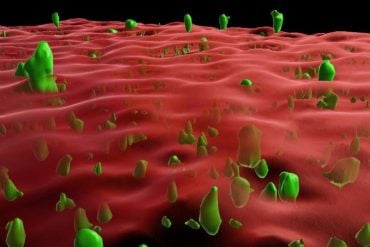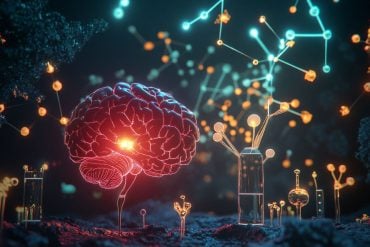Summary: A new study reveals differences in a person’s visual ability to recognize objects is not associated with their general intelligence.
Source: Vanderbilt University.
Just because someone is smart and well-motivated doesn’t mean he or she can learn the visual skills needed to excel at tasks like matching fingerprints, interpreting medical X-rays, keeping track of aircraft on radar displays or forensic face matching.
That is the implication of a new study which shows for the first time that there is a broad range of differences in people’s visual ability and that these variations are not associated with individuals’ general intelligence, or IQ. The research is reported in a paper titled “Domain-specific and domain-general individual differences in visual object recognition” published in the September issue of the journal Cognition and the implications are discussed in a review article in press at Current Directions in Psychological Science.
“People may think they can tell how good they are at identifying objects visually,” said Isabel Gauthier, David K. Wilson Professor of Psychology at Vanderbilt University, who headed the study. “But it turns out that they are not very good at evaluating their own skills relative to others.”
In the past, research in visual object recognition has focused largely on what people have in common, but Gauthier became interested in the question of how much visual ability varies among individuals. To answer this question, she and her colleagues had to develop a new test, which they call the Novel Object Memory Test (NOMT), to measure people’s ability to identify unfamiliar objects.

Gauthier first wanted to gauge public opinions about visual skills. She did so by surveying 100 laypeople using the Amazon Mechanical Turk crowdsourcing service. She found that respondents generally consider visual tasks as fairly different from other tasks related to general intelligence. She also discovered that they feel there is less variation in people’s visual skills than there is in non-visual skills such as verbal and math ability.
The main problem that Gauthier and colleagues had to address in assessing individuals’ innate visual recognition ability was familiarity. The more time a person spends learning about specific types of objects, such as faces, cars or birds, the better they get at identifying them. As a result, performance on visual recognition tests that use images of common objects are a complex mixture of people’s visual ability and their experience with these objects. Importantly, they have proven to be a poor predictor of how well someone can learn to identify objects in a new domain.
Gauthier addressed this problem by using novel computer-generated creatures called greebles, sheinbugs and ziggerins to study visual recognition. The basic test consists of studying six target creatures , followed by a number of test trials displaying creatures in sets of three. Each set contains a creature from the target group along with two unfamiliar creatures, and the participant is asked to pick out the creature that is familiar.
Analyzing the results from more than 2000 subjects, Gauthier and colleagues discovered that the ability to recognize one kind of creature was well predicted by how well subjects could recognize the other kind, although these objects were visually quite different. This confirmed the new test can predict the ability to learn new categories.

The psychologists also used performance on several IQ-related tests and determined that the visual ability measured on the NOMT is distinct from and independent of general intelligence.
“This is quite exciting because performance on cognitive skills is almost always associated with general intelligence,” Gauthier said. “It suggests that we really can learn something new about people using these tests, over and beyond all the abilities we already know how to measure.”
Although the study confirms the popular intuition that visual skill is different from general intelligence, it found that individual variations in visual ability are much larger than most people think. For instance, on one metric, called the coefficient of variation, the spread of people was wider on the NOMT than on a nonverbal IQ test.
“A lot of jobs and hobbies depend on visual skills,” Gauthier said. “Because they are independent of general intelligence, the next step is to explore how we can use these tests in real-world applications where performance could not be well predicted before.”
Funding: The research was funded by National Science Foundation awards SBE-1640681 and BCS-1534866.
Source: David Salisbury – Vanderbilt University
Publisher: Organized by NeuroscienceNews.com.
Image Source: NeuroscienceNews.com images are credited to Anne Rayner, Isabel Gauthier, Vanderbilt.
Original Research: Full open access research for “General object recognition is specific: Evidence from novel and familiar objects” by Jennifer J. Richler, Jeremy B. Wilmer, and Isabel Gauthier in Cognition. Published online May 26 2017 doi:10.1016/j.cognition.2017.05.019
[cbtabs][cbtab title=”MLA”]Vanderbilt University “Visual Intelligence Not the Same as IQ.” NeuroscienceNews. NeuroscienceNews, 8 November 2017.
<https://neurosciencenews.com/iq-visual-intelligence-7897/>.[/cbtab][cbtab title=”APA”]Vanderbilt University (2017, November 8). Visual Intelligence Not the Same as IQ. NeuroscienceNews. Retrieved November 8, 2017 from https://neurosciencenews.com/iq-visual-intelligence-7897/[/cbtab][cbtab title=”Chicago”]Vanderbilt University “Visual Intelligence Not the Same as IQ.” https://neurosciencenews.com/iq-visual-intelligence-7897/ (accessed November 8, 2017).[/cbtab][/cbtabs]
Abstract
General object recognition is specific: Evidence from novel and familiar objects
In tests of object recognition, individual differences typically correlate modestly but nontrivially across familiar categories (e.g. cars, faces, shoes, birds, mushrooms). In theory, these correlations could reflect either global, non-specific mechanisms, such as general intelligence (IQ), or more specific mechanisms. Here, we introduce two separate methods for effectively capturing category-general performance variation, one that uses novel objects and one that uses familiar objects. In each case, we show that category-general performance variance is unrelated to IQ, thereby implicating more specific mechanisms. The first approach examines three newly developed novel object memory tests (NOMTs). We predicted that NOMTs would exhibit more shared, category-general variance than familiar object memory tests (FOMTs) because novel objects, unlike familiar objects, lack category-specific environmental influences (e.g. exposure to car magazines or botany classes). This prediction held, and remarkably, virtually none of the substantial shared variance among NOMTs was explained by IQ. Also, while NOMTs correlated nontrivially with two FOMTs (faces, cars), these correlations were smaller than among NOMTs and no larger than between the face and car tests themselves, suggesting that the category-general variance captured by NOMTs is specific not only relative to IQ, but also, to some degree, relative to both face and car recognition. The second approach averaged performance across multiple FOMTs, which we predicted would increase category-general variance by averaging out category-specific factors. This prediction held, and as with NOMTs, virtually none of the shared variance among FOMTs was explained by IQ. Overall, these results support the existence of object recognition mechanisms that, though category-general, are specific relative to IQ and substantially separable from face and car recognition. They also add sensitive, well-normed NOMTs to the tools available to study object recognition.
“General object recognition is specific: Evidence from novel and familiar objects” by Jennifer J. Richler, Jeremy B. Wilmer, and Isabel Gauthier in Cognition. Published online May 26 2017 doi:10.1016/j.cognition.2017.05.019







